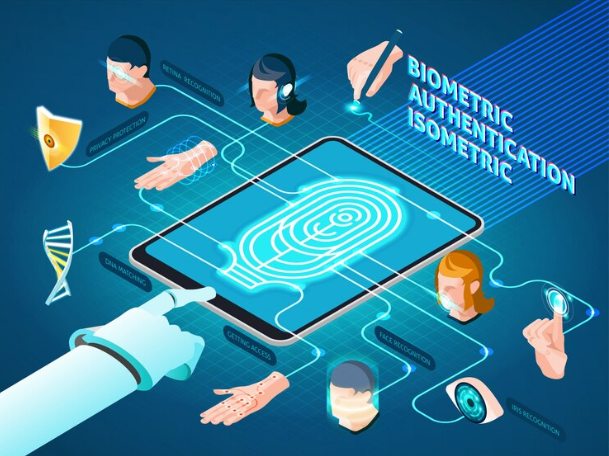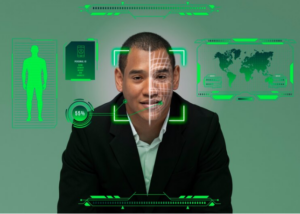The Role of Biometrics in the U.S. Immigration Process

In the United States, biometrics has recently grown vital in ensuring immigration procedures worldwide. Biometric screening immigration guarantees that every applicant’s identity is wholly checked, thus lowering the risk of fraud and raising national security. From the reasons behind their requirement to the procedures involved in the process, this guide will cover all you need to know about biometrics for immigration.
First, define biometrics and explain why it is essential throughout the immigration procedure.
What is Biometrics in U.S. Immigration?
Biometrics involves collecting physical or biological data, including fingerprints, photographs, and even iris scans, to enable accurate individual identification. The U.S. Citizenship and Immigration Services (USCIS) and other government entities collect biometrics for U.S. citizenship and other immigration advantages, including green cards and visas. By confirming that candidates are who they claim to be, the procedure guarantees the security of the immigration system.
Why Does Immigration Need Biometrics?
For most immigration applications, the United States calls for biometrics to guard national security, fight fraud, and protect identities. Using biometrics, the USCIS may conduct thorough background investigations to guarantee that candidates do not represent a risk. Fingerprints collected at U.S. biometrics centers run through numerous databases and search for criminal histories, past immigration infractions, or other problems possibly affecting the application.
For example, are illegal immigrants fingerprinted as part of the immigration process? Indeed, fingerprinting is one of the conventional biometric techniques used to confirm an applicant’s lack of criminal background.
What Happens at a Biometrics Appointment?

After your immigration application is submitted, the USCIS will notify you to attend a biometric services appointment. The notice will list your appointment date, time, and location at a nearby USCIS biometric screening center.
-
Preparing for Your Biometrics Appointment
When you get the biometrics appointment notice, you must get ready. Bring your appointment notification, a government-issued I.D. (like a driver’s license or passport), and any other paperwork specified in the notice letter. Usually, your biometric appointment for immigration consists of fingerprinting, photographing, and maybe collecting other biometric information.
-
What Happens During the Appointment?
Your fingerprints will be electronically scanned during the biometrics appointment. Your picture will also be captured. Usually lasting fifteen minutes, this operation is quick and easy. What is a biometrics appointment for immigration, many people wonder? This is when physical traits like fingerprints and pictures are collected for background checks and identity verification.
-
Why Did I Get a Second Biometrics Appointment Notice?
Some applicants might get a second notice. This could result from incomplete fingerprints, or perhaps more information is required for additional background searches. If your question, “Why did I get a second biometrics appointment notice?” don’t panic; of course, more data is expected in this procedure.
How Long Does the Biometrics Process Take?
Most candidates find the biometrics process to be speedy. Completing the fingerprints and photograph processes at the U.S. biometrics facility usually takes 15 to 20 minutes. However, the time it takes to handle the background checks after the visit will vary.
Candidates typically inquire about What is next after biometrics once the biometrics data is collected. The gathered information is forwarded to the relevant agencies for background checks; the results will help USCIS decide on further actions to take with your immigration application. The whole process—from the biometrics visit to final approval—dependent on the type of immigration benefit you are seeking could take a few weeks to several months.
What Happens If You Miss a Biometrics Appointment?

Missing your USCIS biometrics appointment could seriously slow down your immigration application. Attending the appointment on the designated date is essential; if needed, you should reschedule. A biometrics appointment could prevent your application from being refused or put on wait until you supply the required biometric information.
If you cannot make your appointment, you can ask USCIS to set another one. However, starting this right now would help prevent any unfavorable effects on your immigration case.
After the Biometrics Appointment: What’s Next?
After your biometrics appointment, USCIS processes the collected information. Many candidates question what is next after biometrics USCIS. Several law enforcement and immigration databases cross-check your biometric information. Based on the results, USCIS will either forward your application or, if problems arise, ask for more information or set aside additional interviews.
After fingerprints, how long does it take to acquire a green card? This is a frequent question. However, the exact timeline can vary, so obtaining your green card after the biometrics visit usually takes a few months. Factors such as the particular type of application and the workload at your local biometrics immigration center affect the processing time.
Biometrics for Different Immigration Purposes
-
Biometrics for Green Cards and Permanent Residency
The biometric services appointment is a crucial application phase for people seeking a green card. Using the information, the USCIS does background checks to ensure the applicant has no criminal record or immigration offenses that would deny them permanent status.
-
Biometrics for U.S. Citizenship

The USCIS needs applicants to provide their biometric data throughout the naturalizing process. This confirms the applicant’s identification and guarantees the naturalizing process‘s honesty. In the citizenship framework, biometrics for immigration refers to the identical processes of fingerprinting and photographing to validate the applicant’s identity.
-
Biometrics for Visas
Many visa candidates also have to pass biometric screening. For instance, the biometric entry-exit visa tracking system facilitates monitoring non-U.S. nationals arriving and exiting the nation. It’s a component of a larger initiative to improve the security of the U.S. immigration system and guarantee that those on temporary visas don’t overstay.
Common Questions about Biometrics and American Immigration Policy
-
What is a biometric visa?
A biometric visa application must include biometric data, including pictures and fingerprints, to confirm background and identity.
-
How long does a biometrics appointment take?
Usually, five to eight weeks after filing an immigration application, you get a notice for your biometrics appointments. The USCIS service center handling your matter may affect the timing.
-
Should I schedule another biometrics visit?
Sometimes, applicants may have to attend a second session if further information is needed or the data collected needs to be more comprehensive.
-
Why does immigration depend on biometric screening?
Biometrics and immigration go hand in hand to guarantee that those seeking immigration benefits are carefully screened, lowering the fraud risks and guaranteeing national security.
Final Thoughts: Why Biometrics Matter in Immigration

Biometrics has revolutionized the way U.S. immigration processes work. Biometric data guarantees that the system stays safe and efficient, whether it is for biometrics naturalization, visa applications, or green card processing.
You must be aware if you are negotiating the U.S. immigration system and getting ready for your biometrics visit. See our team of seasoned lawyers at Passage Law for further information on how we might assist you with your immigration procedure. Our areas of expertise are immigration law. Hence, we can help you at any stage.
Call to Action:
Are you seeking professional legal advice on your immigration path? Passage Law can help with biometrics, green cards, or naturalization according to your requirements. Get in touch right now for a consultation, and let us guide you through the complexity of the U.S. immigration system.
